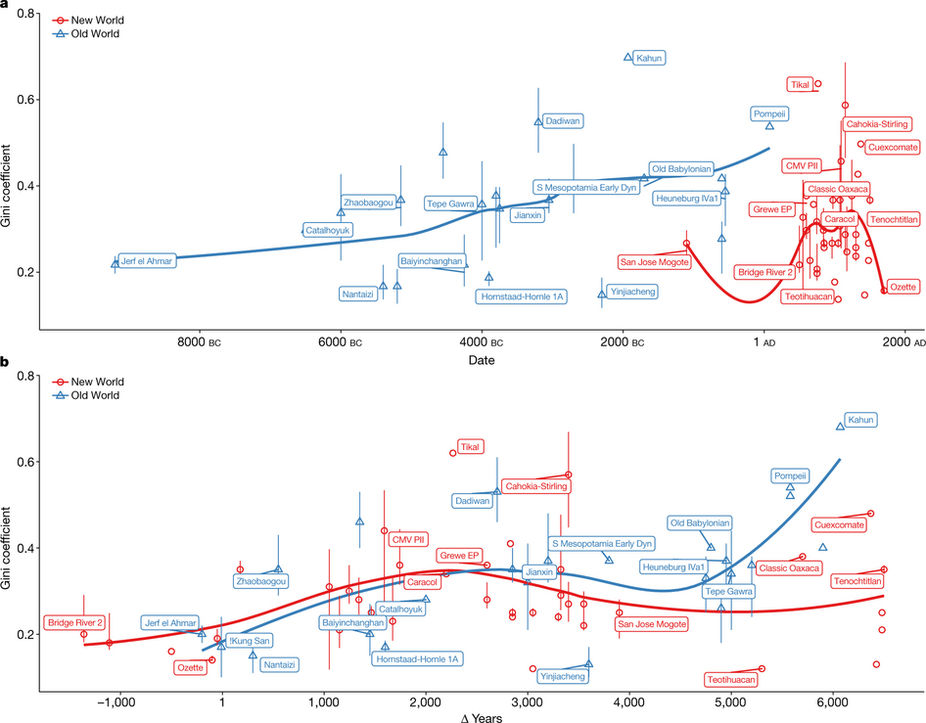Congratulations to our colleagues Tim Kohler (Washington State University), a member of the Center for Digital Antiquity Board of Directors and Mike Smith (School of Human Evolution and Social Change, Arizona State University) for recent attention to the results of their research program on the roots of inequality published in Nature.
Figure 3 from “Greater post-Neolithic wealth disparities in Eurasia than in North America and Mesoamerica,’’ by TA Kohler et al. Nature 551:619-622 (30 November 2017)
a, Coefficients by absolute date of sample (calibrated BC/AD 14C, tree-ring date or calendar date); n = 62; !Kung San was excluded. b, Coefficients by Δyears (date of sample − date of the local appearance of domesticated plants); n = 63. S Mesopotamia Early Dyn, Southern Mesopotamia Early Dynastic; CMV PII, Central Mesa Verde region Pueblo II.
Organized by Kohler and Smith, the research involves work by many scholars, e.g., there are 18 co-authors of the recent Nature article. A symposium at the 2016 SAA Annual Meeting, “Inequality from the Bottom Up: Measuring and Explaining Household Inequality in Antiquity,” involved a similar number of presenters. A book, Ten Thousand Years of Inequality: The Archaeology of Wealth Differences is being prepared for publication by the University of Arizona Press.
Data from the wealth inequalities research project are being deposited in tDAR (the Digital Archaeological Record) for easy and broad accessibility and use. These data also supplement chapters in the forthcoming book.
The research results describe and interpret the long development of wealth inequality from ancient to historic to modern times in different parts of the world. This topic, of course, is of wide interest and concern at present in many parts of the world, not least the United States and China. The research results have been discussed in Science, for which Kohler and Smith were interviewed. The research results were featured in a televised segment by CNN’s Fareed Zakaria.

 Digital Antiquity is pleased to announce the University of
Digital Antiquity is pleased to announce the University of